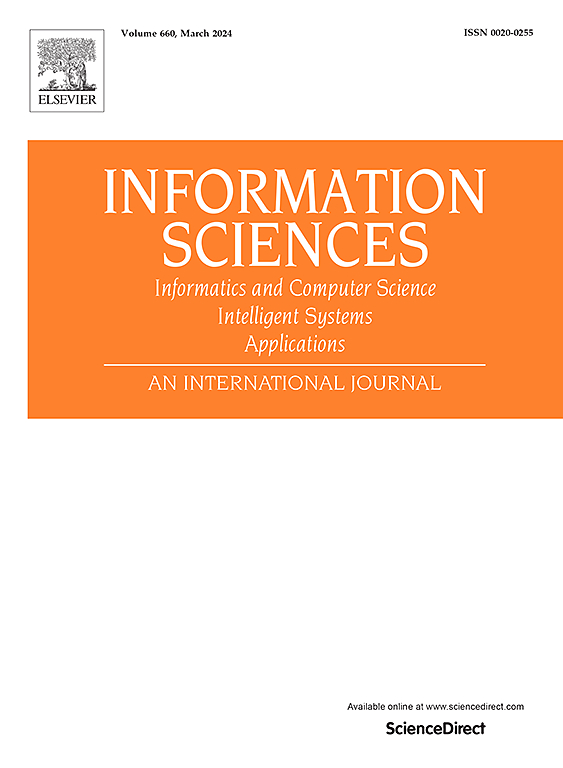YOLO-DKR:基于内核重用的可微分体系结构搜索
IF 6.8
1区 计算机科学
0 COMPUTER SCIENCE, INFORMATION SYSTEMS
引用次数: 0
摘要
近年来,神经结构搜索(NAS)被用于搜索高性能卷积神经网络(cnn)进行目标检测。然而,现有的NAS方法需要昂贵的计算成本。为了解决这一问题,本文针对YOLOv7提出了基于内核重用的YOLOv7可微分体系结构搜索(DARTS)。为了在NAS训练过程中减少GPU内存和搜索时间,我们采用了基于内核重用技术的dart,该技术在单个边缘上共享候选卷积的权重,并将它们合并到单个融合卷积中。此外,我们设计了基于YOLOv7-tiny和YOLOv7网络的超级网络,使用联合搜索策略寻找最优解。最后,在再训练阶段,我们引入了坐标注意(CA)模块,进一步增强了模型对小目标的检测能力。实验表明,该方法具有较高的搜索效率和准确性。我们的轻量级模型YOLO-DKR-tiny只需要0.4 gpu天,是MAE-DET-L搜索时间的三分之二,并且在搜索效率方面优于大多数基于nas的方法。当转移到MS COCO 2017数据集时,YOLO-DKR-tiny在[email protected]:0.95的参数上超过DeepMAD(FCOS) 0.3%。对于小目标检测(APSval), YOLO-DKR达到36.3%,比YOLOv10-C高出0.5%。这些结果证明了我们的方法在优化计算资源的情况下实现卓越检测的有效性。本文章由计算机程序翻译,如有差异,请以英文原文为准。
YOLO-DKR: Differentiable architecture search based on kernel reusing for object detection
In recent years, neural architecture search (NAS) has been used to search high-performance convolutional neural networks (CNNs) for object detection. However, existing NAS methods need expensive computational costs. To address this issue, this paper proposes YOLO-DKR (differentiable architecture search (DARTS) based on kernel reusing for YOLOv7). To reduce GPU memory and search time during NAS training, we employ DARTS based on kernel reusing technique, which shares the weights of candidate convolutions on a single edge and merges them into a single fused convolution. Additionally, we design supernets based on YOLOv7-tiny and YOLOv7 networks, using a joint search strategy for optimal solutions. Finally, during retraining phase, we introduce the coordinate attention (CA) modules to further enhance the model's ability to detect small objects. Experiments demonstrate that our method achieves exceptional search efficiency and accuracy. Our lightweight model, YOLO-DKR-tiny, requires only 0.4 GPU-days, two-thirds of MAE-DET-L's search time, and outperforms most NAS-based methods in search efficiency. When transferred to MS COCO 2017 dataset, YOLO-DKR-tiny surpasses DeepMAD(FCOS) by 0.3% in [email protected]:0.95 with fewer parameters. For small object detection (AP), YOLO-DKR achieves 36.3%, exceeding YOLOv10-C by 0.5%. These results demonstrate our method's effectiveness in achieving superior detection with optimized computational resources.
求助全文
通过发布文献求助,成功后即可免费获取论文全文。
去求助
来源期刊

Information Sciences
工程技术-计算机:信息系统
CiteScore
14.00
自引率
17.30%
发文量
1322
审稿时长
10.4 months
期刊介绍:
Informatics and Computer Science Intelligent Systems Applications is an esteemed international journal that focuses on publishing original and creative research findings in the field of information sciences. We also feature a limited number of timely tutorial and surveying contributions.
Our journal aims to cater to a diverse audience, including researchers, developers, managers, strategic planners, graduate students, and anyone interested in staying up-to-date with cutting-edge research in information science, knowledge engineering, and intelligent systems. While readers are expected to share a common interest in information science, they come from varying backgrounds such as engineering, mathematics, statistics, physics, computer science, cell biology, molecular biology, management science, cognitive science, neurobiology, behavioral sciences, and biochemistry.
 求助内容:
求助内容: 应助结果提醒方式:
应助结果提醒方式:


